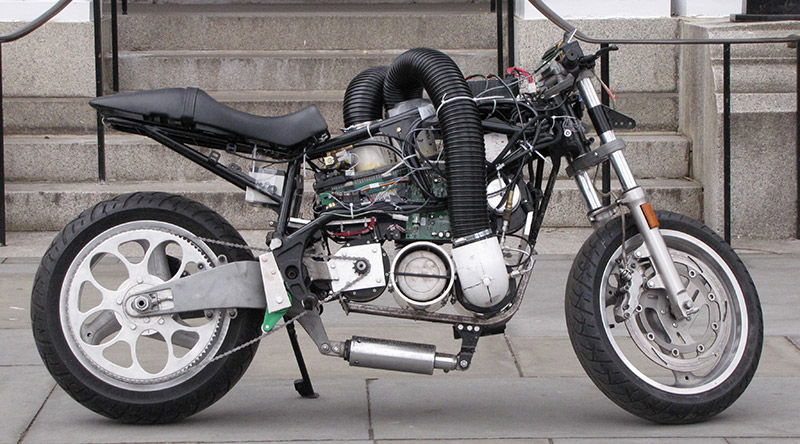Japanese scientists turn water and light into fuel
The team have created a crystal that makes hydrogen by electrolysis of water and light

THE electric motorcycle quandary is something that looks to rumble on for many years to come. Environmentalists are pushing for a shift to ‘clean’ electric power, governments are phasing out petrol and diesel engines, but the motorcycles they want us to use aren’t up to par.
Add to that the fact that most electric vehicles are packed full of rare, and sometimes hazardous materials. Some of which are as damaging to the environment during extraction as internal combustion engines are in their entire lifetime!
For many petrol-powered motorcyclists, the switch to a fully electric motorcycle is just too much of a step down from where we are.
One technology that for now has only been lightly researched – in the two-wheeled world at least – is the hydrogen fuel cell. The theory has been around for nearly 200 years but turning the concept into a viable alternative to fossil fuels or conventional batteries has taken many years.
Now a team of scientists from Japan has taken the idea of hydrogen fuel-cell powered vehicles to the next level, by producing hydrogen in a lab with just a crystal, light, and water.

Suzuki has even built a working hydrogen fuel cell Burgman scooter
How does a hydrogen fuel cell work?
A fuel cell is composed of an anode, cathode, and an electrolyte membrane. A typical fuel cell works by passing hydrogen through the anode of a fuel cell and oxygen through the cathode. At the anode site, a catalyst splits the hydrogen molecules into electrons and protons. The protons pass through the porous electrolyte membrane, while the electrons are forced through a circuit, generating an electric current and excess heat. At the cathode, the protons, electrons, and oxygen combine to produce water molecules. As there are no moving parts, fuel cells operate silently and with extremely high reliability.
The biggest stumbling block in the mass use of hydrogen fuel cells is the production and storage of the fuel that they use. The process of making the hydrogen is energy-sapping, costly and complex.

A homemade hydrogen fuel cell motorcycle - quite the looker!
How could this new process make hydrogen power a reality?
That could be about to change though, as a team of Japanese scientists has used photocatalysts (semiconductor materials taking the form of crystals) immersed in water to produce hydrogen. The theory behind the process has been used before, although what the Japanese team has done is to recreate the procedure with a very high level of efficiency. The new method has turned almost all of the light received into hydrogen, yielding a staggering 96%.
The process isn’t totally over the line yet, requiring a specific wavelength of UV light to begin the reaction, given daylight the yield would be much, much lower.
With hydrogen cells looking like the only genuine clean alternative to convention Lithium-Ion batteries, the new technology makes the idea of filling your tank with water, leaving it in the sun to catalyse and then driving away a slightly more realistic prospect.
Maybe…


